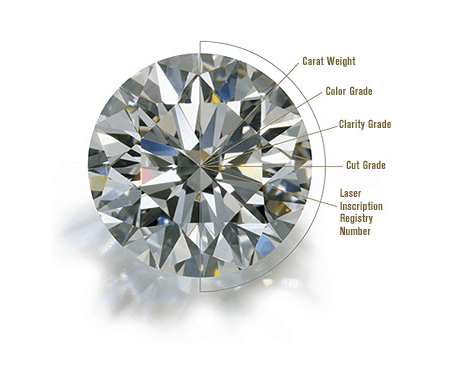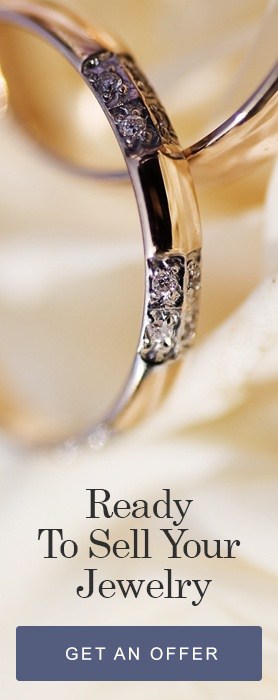As a continuation of our stone series, we are now diving into the world of Rubies!

Ruby History and Lore
It’s no surprise that rubies have been one of the most popular gemstones in the world. With its strikingly strong features and bold hues, rubies have long been known as a status symbol for people with authority or for those that hold power. In ancient civilizations, the ruby’s blood-red hue has been seen as a talisman for invulnerability as well as a source of warmth.
The word “ruby” came from the Latin word rubeus, which means red. According to the Gemological Institute of America (GIA), the ruby is one of the most historically significant colored stones. It is mentioned four times in the Bible, believed by Hindus to be associated with the god Krishna, and is traded by the Chinese in the legendary Silk Road.
Ancient civilizations have also believed rubies emit heat and could restore youth and vitality.
via GIPHY user Ola Szmida
The Corundum Conundrum
Not many know that rubies and sapphires come from the same corundum group with almost the exact same properties.
The only difference? Color.
No - we’re not being sarcastic. It really is just plain color. Allow us to explain.
As we’ve mentioned, rubies come from corundum - which is naturally made up of aluminum and oxygen. Corundum is usually colorless, but when traces of chromium comes into the mix and replaces aluminum, what do you get? Rubies.
Blood-red, magnificent rubies.
Rubies All over the World
According to WorldAtlas, rubies can be found in different parts of the world but more commonly found in Southeast Asia.
Myanmar - The Ruby Capital of the World
Myanmar (formerly known as Burma) rubies have always been considered as the most beautiful in the world because of their high-quality and intense red hue. According to esteemed Gemologist Richard Hughes, Burmese rubies have a “purer” red emission compared to rubies found elsewhere because of exsolved rutile needles that give it an almost “silky” visual while also exuding a strong red fluorescence.
Rubies Elsewhere
While Burmese red rubies are a spectacle on their own - other Asian countries also produce high-quality rubies such as Sri Lanka, Afghanistan, Cambodia, and Thailand.
In North America, albeit in low concentrations, rubies can also be found in parts of the United States. Meanwhile, in Africa, rubies may be found in Kenya, Nigeria, Malawi, and Mozambique.
How Much Do Rubies Cost? Are Rubies Worth More Than Diamonds?
If you’re reading this article, chances are you’re interested in buying something with rubies and you just want to know more. You’ve probably already searched rubies for sale or rubies near me and you’ve gotten varying answers out of your hours of searching. Don’t worry - it’s normal.
A ruby’s price, like most stones, depends on its 4 Cs - Color, Clarity, Cut, and Carat. Don’t know what that is? Let Luriya’s expert appraiser Fima Kandinov briefly introduce you to the 4 Cs of precious stones.
“People need to understand that color, clarity, cut, and carat weight all contribute to a stone’s preciousness. It basically determines how rare it is and how much you should pay for it,” says Kandinov. “Color and clarity involve different grades that basically deal with the intensity of its hue and the number of inclusions that affect the overall clarity of a stone. On the other hand, Carat and Cut involve shape and weight. Of the 4 Cs, carat weight might just be the easiest factor to determine. Much like other precious gems and stones, the weight of a ruby is expressed in carats. The heavier it is, the more precious it will be.”
This tells us that the purer the stone, the more desirable it will be. By purer, we mean that the fewer the blemishes, the brighter the hue, the heavier the stone, and the more precise the shape is, the better. Basically, the ruby that you should buy should be a great balance of all the 4 Cs - which will then determine how much you will be paying for it.
If you’re interested in finding the most expensive ruby stone or ruby jewelry ever sold, check out this article by True Facet about 5 of the Most Expensive Ruby Pieces Ever Sold.
Caring for Your Ruby: Tips on Taking Care of Your Precious Red Stones
Corundum - the base stone for rubies and sapphires - ranks ninth on the Mohs Hardness Scale. This means that your ruby is, well, relatively sturdy. According to the GIA, rubies are resistant to the effects of heat, light, and other common chemicals.
Take your ruby jewelry off before engaging in physical tasks. Although durable, rubies may chip due to blunt impact. It is also suggested that your ruby be professionally cleaned and inspected every six months or at least every year. Besides keeping your ruby jewelry as sparkly and as gorgeous, regular inspection of your jewelry ensures that your ruby is in tip-top shape.
When it comes to cleaning your ruby, clean it using a brush with a mixture of soap and warm water. You could also use a mixture of baking soda, water, salt, and dish soap solution. If you’re thinking of scrubbing your ruby jewelry, please remember to only use a soft-bristled toothbrush or a soft cloth.
Lastly - you might think this funny but we HAVE to remind you to close drains and avoid dropping your ruby jewelry on hard floors. This is pretty much self-explanatory!
BONUS: Thinking of selling ruby? Talk to Luriya! Luriya has been in the jewelry business for almost three decades with the mission to provide customers with not only the best prices but also the best customer service available anywhere. Visit our official website at www.luriya.com to set up an appointment!
Until next time, folks!








